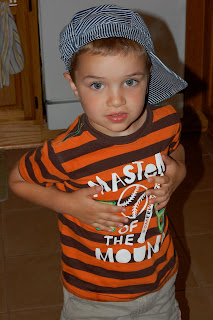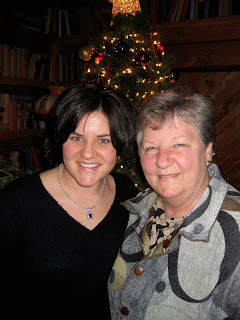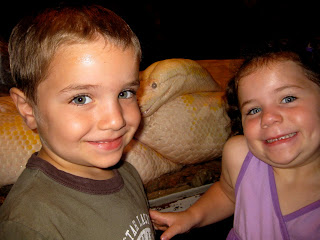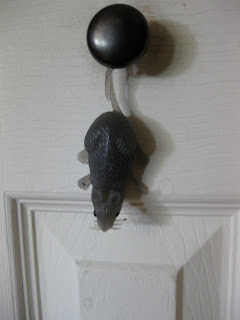I write on my blog about meals I make and hear my children tell me they don't like certain foods.
I cannot fathom my children eating dirt because they have nothing else.
Children in Asia do. They are hungry and there is no food.
As you read the news story below, you will hear mention of corruption. The food, even if it's "provided" by the government, doesn't always get to where it should go. Why? Sometimes it's corrupt leaders and officials. If a leader feels some people (Dalits) are worthless and are sub-human, they think it's fine to starve them. It really all boils down to a need for heart change.
Gospel for Asia's Bridge of Hope centers, Compassion Services, Christmas Gift Catalog, and many other programs meet the physical needs of people in Asia, but also make sure they hear the Gospel. If we only feed a belly, they will just go to hell with a full stomach--still separated from the God of the universe who loves them and has died to know them.
The following story was taken from
BBC News "Diet of mud and despair in Indian village"

"We live on a day-to-day basis," Suraj says, as the faint sound of hammering echoes across the village. "What we earn is what we spend on our families in a day."
In Ganne, just off the main road about an hour south of the city of Allahabad, this is a simple fact of life.
It is home to members of a poor tribal community, who live in small huts clustered around a series of shallow quarries.

Inside one of the huts sits a little girl called Poonam. She is three years old, and in the early stages of kidney failure.
Like many children in Ganne she has become used to eating bits of dried mud and silica, which she finds in the quarry. Tiny children chew on the mud simply because they are hungry - but it is making them ill.
When reports first emerged of children eating mud here local officials delivered more food and warned the villagers not to speak to outsiders. But Poonam's father, Bhulli, is close to despair.
"What can I say," he shrugs. "We can't afford to eat properly, so how can I afford to buy medicines for her?"
"I am really worried about my daughter, but I don't know what to do next. The poor need the government's help - if we had it, we wouldn't be in such a desperate state."
People like Bhulli and Suraj make their money filling lorries with bits of rock. It takes about eight hours for five men to fill one load. They carry the stones up from the quarry in plastic washing-up bowls balanced on their heads.
One of the women in the village, Phulkari, approaches to tell us about her little boy.
"My son's name is Suraj, and he's started eating mud too," she says. "What can we do? We eat the mud from the quarry when we feel hungry."
"Where do we get the money?" she asks. "We usually eat food only once a day. Last night we went to bed without eating anything at all."
Food protests
The World Bank estimates that one third of all the very poorest people in the world live in India, and stories like those from Ganne have now inspired a national Right To Food campaign.
There have been protest rallies in the heart of Delhi, as the Indian parliament prepares to debate a new Food Security Bill. It will dictate how many people in the country get access to massively subsidised food grain.
There's no doubt that India should be able to afford to feed its people. But the devil is in the detail.
"It'll only cost the government about 1.2% of GDP to universalize a system of giving food for all, cheap food for all," says Kavitha Srivastava, the national coordinator of the Right to Food campaign.
"They can do it, if they have the political will. It's prioritising - where do you want to put the money?"
"We think it should go in building people's nutrition levels. You can't have a country which is weak, which is hungry, which is anaemic. How can you have a nation like this?"
Now the government seems to be prepared to accept a new way of defining poverty, which will increase the number of people below the poverty line by more than 100 million to about 372 million.
If international poverty standards were used, the number would be much higher still - and some Indian economists believe it should be.
But whichever figure is used, the poverty line feels like a rather fictitious divide because feeding more than a billion people is a massive logistical exercise. Vast quantities of food provided by the state go missing every day because of corruption and theft.
"Food ought to be a right," says Dr Kaushik Basu, the Chief Economic Advisor at India's Ministry of Finance. "And I believe this is a movement in the correct direction."
"But what worries me at times is that we're being too glib and quick about the delivery mechanism."
Official estimates are that right across the country 75% of subsidised grain does not make it to the intended target in villages like Ganne.
"So if you simply throw money at this problem, you'll have to throw four times the amount to get the result you want," says Dr Basu. "And the government of India can't afford that. The budget will go bust."
In other words, the delivery system needs to be reformed as well - and corrupt local officials need to be taken to task. There is a long way to go.
Daunting challengeJean Dreze, a highly respected Belgian-born academic who has worked in India for many years, points out that the current debate is only about the most basic levels of food intake.
"For a family of five to have reasonably good nutrition, nothing like meat or fish or any such thing, but just one egg per person per day, one banana, some dhal, some vegetables, a reasonably balanced diet - it would cost more than 200 rupees ($4.4; £3) per family per day," he says.
And that is far more than the amounts being discussed at the moment.
It is a sobering reminder that feeding India is a daunting challenge - the government knows it, and the prime minister says it must be a priority. But the Right to Food Campaign insists they are not doing enough.
The Indian economy continues to grow at impressive speed, and there is no shortage of food in the country. It just isn't reaching the people who need it most, on a consistent basis.
So in Ganne they continue to eat mud. And without finding a solution here in India, the world will come nowhere near the targets it has set itself for reducing global poverty.



























 "We live on a day-to-day basis," Suraj says, as the faint sound of hammering echoes across the village. "What we earn is what we spend on our families in a day."
"We live on a day-to-day basis," Suraj says, as the faint sound of hammering echoes across the village. "What we earn is what we spend on our families in a day." Inside one of the huts sits a little girl called Poonam. She is three years old, and in the early stages of kidney failure.
Inside one of the huts sits a little girl called Poonam. She is three years old, and in the early stages of kidney failure.






















